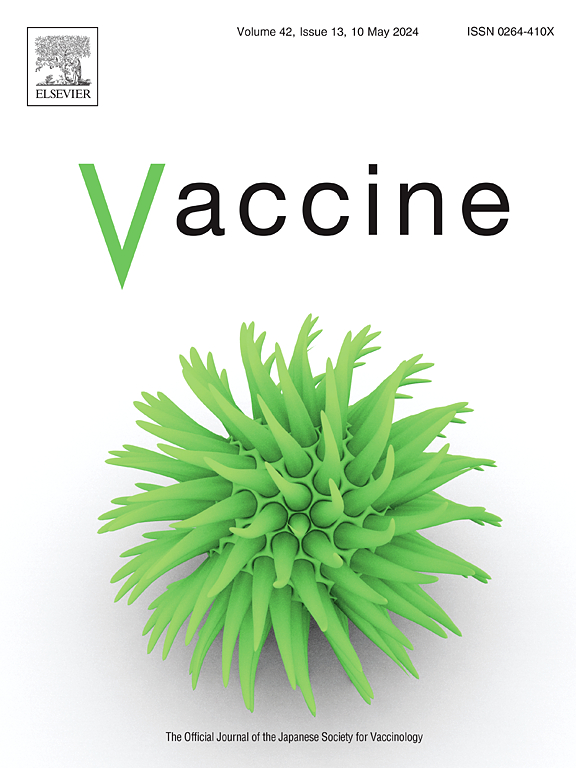Sociodemographic and socioeconomic disparities in pediatric influenza vaccination: A cohort study from the pedianet network
IF 4.5
3区 医学
Q2 IMMUNOLOGY
引用次数: 0
Abstract
Objectives
To evaluate the sociodemographic and socioeconomic factors impacting pediatric influenza vaccination coverage in Italy.
Study design
This retrospective observational cohort study included all children aged 6 months to 14 years at the start of the five consecutive seasons (September 1, 2019, to January 31, 2024) who were enrolled in the Pedianet network, a comprehensive database comprising over 200 family pediatricians in Italy. Generalized linear mixed-effects models were used to analyze the association between children's sex, age group (6 months-6 years, 7–11 years, 12–14 years), sibling status, area of birth, Area Deprivation Index (ADI), presence of comorbidities, and vaccination coverage across seasons.
Results
Influenza vaccination coverage remained suboptimal across all seasons considered, with a minimum of 7 % in 2019/2020 and a peak of 12 % during the 2020/2021 season. The likelihood of vaccination decreased with increasing age, while children with at least one sibling and those residing in Central or Southern Italy and the Islands were more likely to be vaccinated. Beginning with the 2020/2021 season, our results demonstrate a significantly lower likelihood of vaccination among children from more deprived areas. No significant differences were observed between males and females.
Conclusion
Our findings enhance the understanding of the sociodemographic factors influencing influenza vaccination coverage among Italian children. Considering the role and complexity of these determinants is essential for developing tailored vaccination strategies to improve coverage in the future.
儿童流感疫苗接种的社会人口统计学和社会经济差异:来自pedianet网络的队列研究
目的评价影响意大利儿童流感疫苗接种覆盖率的社会人口统计学和社会经济因素。本回顾性观察队列研究纳入了连续5个季节(2019年9月1日至2024年1月31日)开始时6个月至14岁的所有儿童,这些儿童加入了意大利Pedianet网络,这是一个由200多名家庭儿科医生组成的综合数据库。采用广义线性混合效应模型分析儿童性别、年龄组(6个月-6岁、7-11岁、12-14岁)、兄弟姐妹身份、出生地区、地区剥夺指数(ADI)、合共病的存在和跨季节疫苗接种覆盖率之间的关系。结果流感疫苗接种覆盖率在所有考虑的季节都不是最佳的,2019/2020年最低为7%,2020/2021年高峰期为12%。接种疫苗的可能性随着年龄的增长而降低,而至少有一个兄弟姐妹的儿童以及居住在意大利中部或南部和岛屿的儿童更有可能接种疫苗。从2020/2021赛季开始,我们的研究结果表明,来自较贫困地区的儿童接种疫苗的可能性要低得多。在男性和女性之间没有观察到显著差异。结论本研究结果有助于了解影响意大利儿童流感疫苗接种率的社会人口学因素。考虑这些决定因素的作用和复杂性对于制定有针对性的疫苗接种战略以提高未来的覆盖率至关重要。
本文章由计算机程序翻译,如有差异,请以英文原文为准。
求助全文
约1分钟内获得全文
求助全文
来源期刊

Vaccine
医学-免疫学
CiteScore
8.70
自引率
5.50%
发文量
992
审稿时长
131 days
期刊介绍:
Vaccine is unique in publishing the highest quality science across all disciplines relevant to the field of vaccinology - all original article submissions across basic and clinical research, vaccine manufacturing, history, public policy, behavioral science and ethics, social sciences, safety, and many other related areas are welcomed. The submission categories as given in the Guide for Authors indicate where we receive the most papers. Papers outside these major areas are also welcome and authors are encouraged to contact us with specific questions.
 求助内容:
求助内容: 应助结果提醒方式:
应助结果提醒方式:


